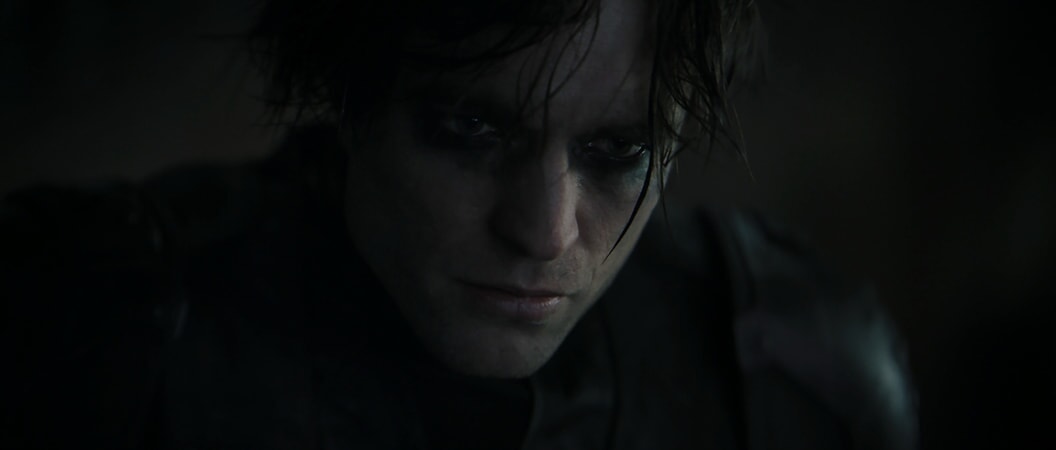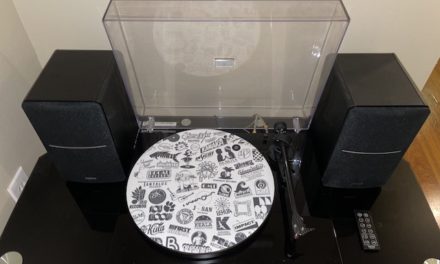Robert Pattinson as the new Batman shows a new take on the classic character. (Photo courtesy of Warner Bros.)
By Shawna Takaki | Staff Writer
The Batman movie franchise is rebooted once more with a new rendition of the black and blue clad superhero who prowls through the night.
This movie was said to be inspired by comic books such as “Batman: Year Two” and “Batman: The Long Halloween,” and it’s clear as day what it means. “Batman: Year Two” was a murder mystery about Batman’s second year as a hero and likewise the latter is a mystery following a serial killer as well.
This movie leaves behind the DC “Snyderverse” (which makes some fans happy and some unhappy) and forges a new story for the future in a new canon, with future expansion of the canon in sight with spin-off shows planned to air on HBO.
Our new Batman, played by Robert Pattinson, is thoroughly miserable and serious in all of his dialogue and shows great depth in his monologues. Even in his Bruce Wayne persona, he’s just as quiet, cold, and reclusive as his hero self unlike the traditional playboy persona Bruce takes on, creating a story where the both sides of him are almost indistinguishable except the hero suit he dons.
While he already took on the mantle of the Batman and has been fighting crime for long enough to be a recognized vigilante, he is still completely haunted by the murder of his parents and is finding his place as Gotham’s hero.
When asked by a thug who he is, he says: “I’m vengeance.”
Consequences and justice are a main theme in the movie. Batman, or rather, Bruce, is challenged in his past and his beliefs, and ‘justice’ is the belief that Riddler holds close to his heart and is behind his crimes. And with it, Batman has to reevaluate what ‘vengeance’ is.
Once the movie starts, the murder mystery starts off and you’re introduced to who the villain of the story is – and this is perhaps one of the most important parts of the story. People love villains and people love the Batman rogues. And we soon learn that our villain for this tale is the Riddler.
In almost every well-known Batman story, though not every one, Joker is the main antagonist – which is understandable. Joker is perhaps the best foil to Batman as a character, being someone who is motivated by trying to challenge his beliefs and morality and thus a perfect way to break down our hero’s character.
But Riddler was the perfect villain for this movie for many reasons.
One of these reasons is that we’ve seen the Joker countless times in the spotlight. The most loved and universally acclaimed Batman movie, “The Dark Knight” had Heath Ledger in the role to an almost perfect movie for Batman, and recently, Joaquin Phoenix in “Joker,” a solo film focusing solely on his character.
But apart from that, Riddler also rivals Batman in his wits, and is as a character meant to be a distorted reflection of Batman’s intellect. And this rendition of Riddler’s motivation and plan is inspired directly by the Wayne legacy and Batman’s actions in a way that can bring true fear to Batman, who thought he had mastered fear.
Paul Dano’s Riddler is very different from the classic depiction of the Riddler in design. Where he’s usually seen sporting a green suit, here he has a gas mask and army jacket, making him more realistically inconspicuous. He’s also more of a horrific serial killer than the comic villain wearing a neon green bodysuit with question marks all over it as well. Though the design is less immediately recognizable or in line with his classic appearance, it fits with the tone of the movie.
Much of the movie is in darkness and the tone is reflected in it. Batman is a hero who broods on the roof of a building looking over the crime-ridden, murky Gotham rather than one who flies the blue skies, but the movie succeeds in the cinematography being beautiful at the same time.
Many works that are ‘serious’ tend to also sap the color out of their movie and end up with shots that are consistently muted and to put it simply – dead. Often, big blockbuster movies can have shots that feel like their only focus is utility, but this movie moved me with its cinematography. A few weeks from now, I’ll remember multiple shots from the movie because they impressed upon my memory due to their framing and significance.
The music composed by Michael Giacchiano, an acclaimed composer, and the music underscoring the film is fittingly dark and evokes the sound of a horror movie rather than a superhero movie, with a soundtrack that reminds me of the “Arkham” games and fits the horror detective thriller aesthetics of the movie. My favorite track is “The Riddler” which fills you with a sense of dread with its minimalistic sound and of course Batman’s theme is memorable and perfectly suited to the movie.
Tied to the aesthetic of “The Batman”, the movie is at heart a film noir piece, which is a part of the Batman’s mythos from his inception and creates a tone true to the spirit of the character. The movie wanted to be a sleek, dark, crime mystery with Batman as the noir detective.
But despite my praises for the premise and ideas in the movie, the actual mystery-solving that takes up much of the movie feels more like a set piece for the characters and twists of the story rather than what the movie is about (despite it being most of the plot). Batman seems to simply realize the answers to the mystery at just the right times for the plot to proceed without the sufficient clues and tension that make a great mystery, making it hard to feel truly satisfied by Batman finding things out.
So what is it ultimately the background to?
Catwoman and Batman have a romance in many versions of Batman’s story, but this version lacks the chemistry that should be there for it to feel charged and earned. The movie goes through the motions of their romance but it feels played out. “The Bat and the Cat” feels pushed rather than earned.
We’re introduced to Catwoman, played by Zoe Kravitz, early in the movie while Batman is investigating the mystery and they work together, leading to learning more about Catwoman, who on her own is an interesting character. Her acting sells the character and shows charm. She’s the classic version of herself with a catlike edge and ultimately shows potential for further exploration.
Penguin, portrayed by Colin Farrell, is also there as the right hand man to Falcone, part of the mob storyline in the movie, and while Penguin ultimately has little part in the overall plot, he’s an incredibly well-done adaptation of his character at the point before he becomes the mob boss of Gotham. I’m intrigued to see where the story will take it, as he is an obvious part of the story that was less focused on in the present movie but will definitely play a bigger role in the future as he becomes the de facto mob boss of Gotham.
His journey to the top was last explored recently in the show “Gotham” and was the best part of the show, so I have high hopes for where Penguin’s journey to the top could go in a possible sequel.
Carmine Falcone, played by John Turturro, as the mob boss controlling the entirety of Gotham is strong. He is perhaps the most menacing character of the bunch and has a strong performance behind him that sells him more than anything else.
The movie is serious and a slow burn, but there are many twists and turns to be had within its three-hour runtime. Virtually anyone who loves Batman would find something to love within the movie, even if it isn’t perfect.
Batman, in the end, is a hero. Gotham is destroyed, but ‘hope’ isn’t. And with a lead-in to the sequel we know is probably coming out, we end the movie with a strong vision for the future of the story.






